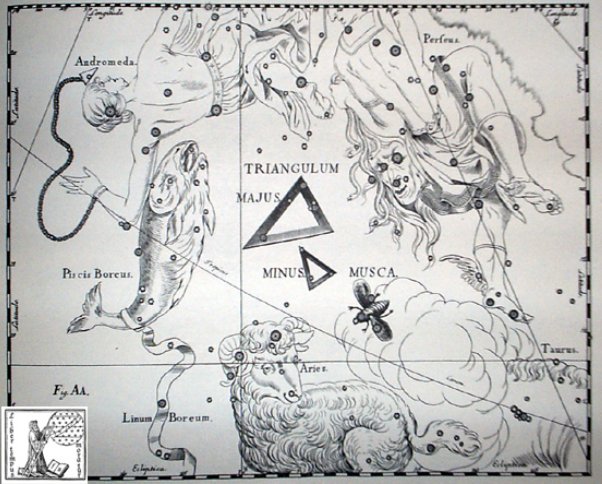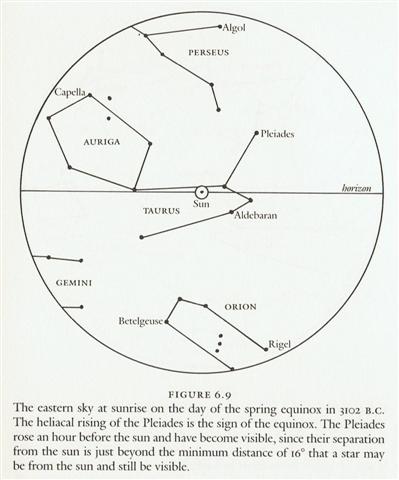 This is an example of the ragi (GD22).type of glyph:
Why are they equipped with legs in the first three
periods?
As a first step in order to search for
answers to this question we need to count,
and the positions in the text on side b of
the H tablet can be counted from
my overview
table:
For instance is Hb3-16 = 100 + 16 and Hb4-16 = 147 + 16 = 163:
The positions of these 4 ragi glyphs are not arbitrary but evidently resounding the mythical numbers. For instance could day 141 (probably each glyph corresponds to a day) be alluding to the star Bharani (*41.4) in Musca Borealis, because this star was a key for the Arabs (and presumably all following astronomers).
Although currently (in my assumed era for the rongorongo texts) Bharani was rising at the horizon in the east together with the sun in May 1 (121, *41) it can be assumed that due to the precession of the sun as observed against the fixed stars in the night sky (ragi), it would be of value for the astronomers to translate these slowly changing dates into a fixed base position far back in time. In the Golden Age of the Bull (*64 right ascension positions earlier it could be calculated) Bharani would have risen with the sun in day 121 - 41 = 80 (which 'happens to' coincide with the date March 21, which the Pope Gregory XIII had chosen for spring equinox in his new calendar and which consequentially became 0h for the astronomers). ... Ecclesiastically, the equinox is reckoned to be on 21 March (even though the equinox occurs, astronomically speaking, on 20 March in most years) ... However, in ancient times they had waited for the return to visibility of the heliacal stars, and this motivated an addition with 16 days.
So the current day 80 had to be converted into 80 + 16 = 96 (April 6). And to find out which star would have risen with the sun at spring equinox in the Golden Age of the Bull the astronomers would have to add 16 right ascension days to those 64 which were necessary in order to compensate for effects of the precession. When the sun rose earlier and earlier as judged from the positions of the fixed stars it meant those stars would be observed to come later and later in the sun calendar. March 21 (80) + 64 = 144 (= 12 * 12), which expressed in right ascension positions would be 144 - 80 = *64 days after 0h. Which means the star rising at the same time as the sun in the Golden Age of the Bull should have been Hyadum II in MARCH 21. We can with certainty rely on my interpretation of this place in the G text. The current date for this event, viz. the true heliacal rising of Hyadum II, would thus be MARCH 21 (80) + 64 = 144 (May 24). But then it would be necessary to add 16 more days. May 24 (144) + 16 = 160 (June 10).
We can here perceive that Hb3-16 (116 → Ga1-16) could have represented the current place of Elnath (the Butting One):
|
|||||||||||||||||||||||||||||||||||||||||||||||||||||||||||||||||||||||||||||||||||||||||||||||||||||||||||||||



